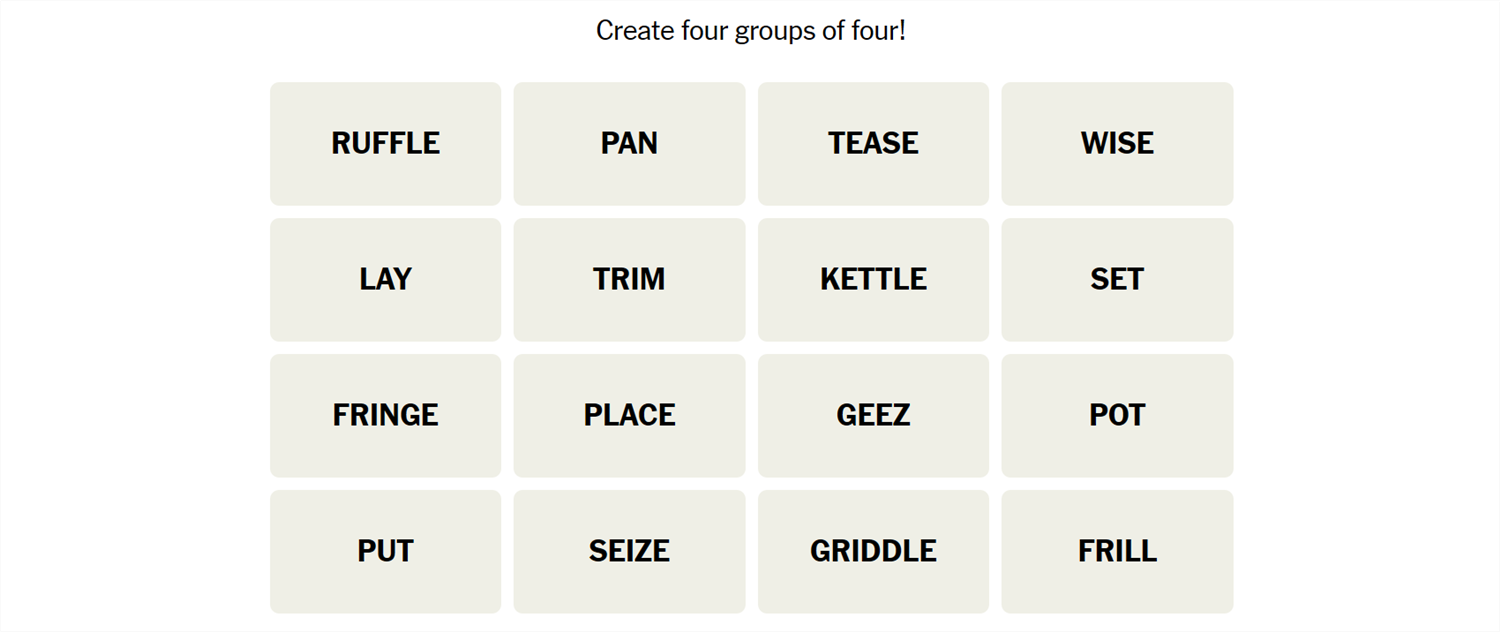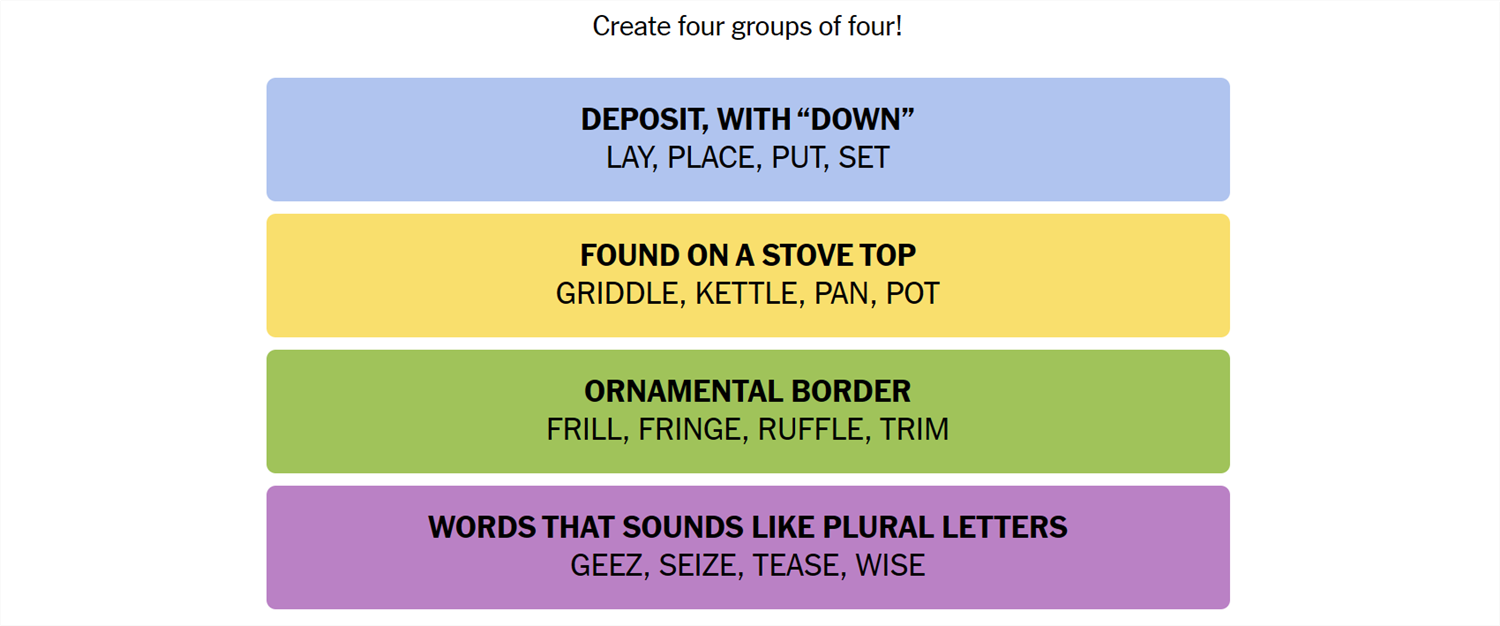Connections is a game from the New York Times that challenges you to find the association between words. It sounds easy, but it isn’t—Connections categories can be almost anything, and they’re usually quite specific. If you need a hand getting the answers, we’ve got you covered.
What Is Connections?
Connections is a game from the New York Times. The objective is simple: sort 16 words into groups of 4. Each group of words will be connected by some common idea or theme. That common element could be anything. We have seen everything from games that rely on the number of letters in the words to categories that require you to spot an extra letter at the end of the word. Sometimes they’re references to economics, other times they reference fairy tales. There is no telling what sort of association there will be between words.
Once you’re confident you understand the connection, select 4 words, then hit “Submit.” You have only four attempts in total, so don’t be too guess-happy.
Hints for Today’s Connections Groups
Here are a few hints for the 350th Connections game to get you started:
- Yellow: Things you’d cook with.
- Green: Decorations.
- Blue: The opposite of pick up.
- Purple: Alphabetical characters.
If you still need help, the actual group names are:
- Yellow: Found on a Stove Top
- Green: Ornamental Border
- Blue: Deposit with “Down.”
- Purple: Words That Sounds like Plural Letters
Today’s NYT Connections Answers
Found on a Stove Top (Yellow):
Griddle, Kettle, Pan, Pot
Ornamental Border (Green):
Frill, Fringe, Ruffle, Trim
Deposit with Down (Blue):
Lay, Place, Put, Set
Words That Sounds like Plural Letters (Purple):
Geez, Seize, Tease, Wise
How Did We Solve This Connections Game?
May 26th was a pretty normal game. The first group I spotted was Blue, “Deposit with Down.” The words were lay, place, put, and set.
Griddle, kettle, pan, and pot are all cooking implements, and it seemed likely they were in a group together. They belonged to the Yellow group, “Found on a Stove Top.”
Trim and edge are all related to edges, usually in a decorative sense. With that in mind, fringe seemed like a decent addition. Ruffle seems like a bit of a stretch, but it is the only other one that might fit. Together, those 4 words were “Ornamental Border,” which was in Green.
The last four words were geez, seize, tease, and wise. They were in the Purple group, which was properly named “Words that Sounds like Plural Letters.”
How Do You Guess Connections Groups?
There is no quick, reliable way to approach Connections like there is with Wordle, since Connections isn’t algorithmic. However, there are a few things to keep in mind that can help.
- Look for similar parts of speech. Are some words verbs and others nouns? Are some adjectives? Try mentally grouping them based on those categories and see if any other patterns jump out at you.
- Are the words synonyms? Sometimes categories will just be synonyms for a phrase, or very close to synonyms. Don’t rely too closely on this, though. Occasionally, Connections will deliberately throw in words that are sometimes synonyms to mislead you.
- Try saying the words. Sometimes, saying the words helps. One puzzle we saw included the words go, rate, faster, clip, pace, speed, move, commute, and hurry—all of which are obviously related to the idea of motion. However, when you say them, it becomes a little more obvious that only four (go, move, hurry, faster) are things you’d actually say to prompt someone to get moving.
- Expect the red herring. Connections usually has words that could be plausibly, yet incorrectly, grouped together. Take the words Bud, Corona, and Light, as an example. You might instinctively see those three words together and assume they’re lumped together in a category related to beer—but they weren’t.
- Look for distinct words. If a word on your board doesn’t have multiple meanings or can really only be used in one context, try using that word as the basis for a category.
- Shuffle the board. Sometimes, moving words around will help you look at them in new ways.
If you didn’t solve this one, don’t feel too bad—there’s always tomorrow! And those words may align with a topic you’re interested in, giving you a leg up on the competition.





![iOS 18: top 18 features and changes for iPhone [Video]](https://techtelegraph.co.uk/wp-content/uploads/2024/06/iOS-18-Top-Features-218x150.jpg)
